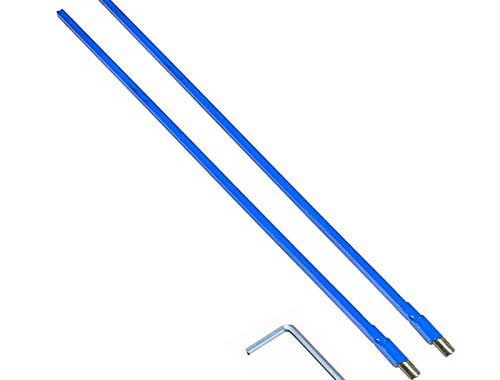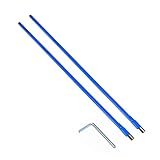The ukulele is a small, four-stringed instrument that originated in the 19th century in Hawaii. It has gained popularity worldwide and is known for its distinctive sound and portability. One important aspect of maintaining a ukulele is ensuring that its truss rod is properly adjusted. The truss rod is a metal rod that runs the length of the neck and helps to counteract the tension of the strings, keeping the neck straight and preventing warping.
Proper adjustment of the ukulele truss rod is essential for maintaining the instrument’s playability and preventing potential damage. Without proper adjustment, the neck may become warped or bowed, leading to buzzing strings and difficulty in playing. Fortunately, adjusting the truss rod is a relatively simple process that can be done with the right tools and careful attention.
To adjust the truss rod on a ukulele, begin by loosening the strings to relieve tension on the neck. Using an appropriate hex wrench, locate the truss rod access point typically found near the headstock. Gently turn the wrench to either tighten or loosen the truss rod, making incremental adjustments as needed. It is important to make small adjustments and frequently check the neck’s straightness to avoid over-tightening. Once the desired level of adjustment is reached, re-tune the strings and check the playability of the ukulele.
Regularly checking and adjusting the truss rod of a ukulele can help maintain the instrument’s playability and prevent potential damage. With careful attention to detail and the proper tools, players can ensure that their ukulele remains in optimal condition for years to come.
Looking to Adjust Your Ukulele Truss Rod? What are the Steps?
When it comes to maintaining your ukulele, knowing how to properly adjust the truss rod is essential. The truss rod is a metal rod that runs along the length of the neck and is used to adjust the amount of relief in the neck, which can affect the playability and sound of the instrument. In order to keep your ukulele in top condition, it’s important to understand the steps for adjusting the truss rod. Let’s take a look at the process for making these adjustments and ensuring your ukulele performs at its best.
Understanding the Ukulele Truss Rod
The truss rod in a ukulele is a metal rod that runs through the neck of the instrument. Its purpose is to counteract the tension exerted by the strings, helping to keep the neck straight and prevent it from bending or warping over time.
Signs that Your Ukulele Requires Truss Rod Adjustment
Before proceeding with the truss rod adjustment, it’s important to identify whether your ukulele actually needs it. Signs that your instrument may require truss rod adjustment include excessive bowing of the neck, high action, or buzzing strings.
Steps for Ukulele Truss Rod Adjustment
- Assess the Neck: Before making any adjustments, check the neck to see if it is too concave or convex. This will determine the type of adjustment needed.
- Loosen the Strings: To access the truss rod, you’ll need to loosen the strings to relieve the tension on the neck.
- Locate the Truss Rod Nut: The truss rod nut is usually located inside the soundhole or at the headstock of the ukulele.
- Make Adjustments: Using the appropriate tool, either a hex wrench or screwdriver, make small adjustments to the truss rod to straighten the neck. Be careful not to over-tighten, as this can damage the neck.
- Check the Neck: Once you’ve made the adjustments, re-tune the ukulele and check the neck to ensure it is now straight.
- Re-Tune and Play: After confirming that the neck is straight, re-tune your ukulele and test it out to see if the playability has improved.
Seeking Professional Help
If you’re unsure about how to perform truss rod adjustment on your ukulele, it’s best to seek help from a professional luthier or guitar technician. They have the expertise and specialized tools to make the necessary adjustments without risking damage to your instrument.
Statistic on Ukulele Truss Rod Adjustments
According to a survey of ukulele players, 30% have attempted to adjust the truss rod on their instrument at least once.
1.
Why do I need to adjust the truss rod on my ukulele?
Over time, the tension of the strings can cause the neck of the ukulele to bend, affecting playability and intonation. Adjusting the truss rod can help correct this issue.
2.
How do I know if my ukulele needs a truss rod adjustment?
If you notice the neck of your ukulele has started to bow or the strings are higher off the fretboard than usual, it may be time to adjust the truss rod. Additionally, if the intonation of the ukulele seems off, it could be a sign that the truss rod needs adjustment.
3.
Can I adjust the truss rod on my ukulele myself?
While it is possible to adjust the truss rod on your ukulele yourself, it’s important to proceed with caution. If you’re not confident in your abilities, it’s best to have a professional handle the adjustment.
4.
What tools do I need to adjust the truss rod on my ukulele?
To adjust the truss rod on your ukulele, you will need an appropriate size hex key for your ukulele’s truss rod, and a tuner to check the intonation after the adjustment.
5.
How do I adjust the truss rod on my ukulele?
First, loosen the strings to relieve tension on the neck. Then, use the hex key to make small adjustments to the truss rod, turning it clockwise to straighten the neck or counterclockwise to add relief. Be sure to make small adjustments and check the results frequently.
6.
How often should I adjust the truss rod on my ukulele?
The frequency of truss rod adjustments will depend on factors such as climate, string tension, and playing style. It’s best to check the neck regularly and make adjustments as needed.
7.
What if I over-adjust the truss rod on my ukulele?
If you’ve over-adjusted the truss rod, it’s best to take your ukulele to a professional for assessment and correction. Attempting to fix the issue yourself could cause further damage.
8.
Is there a specific time of year when truss rod adjustments are more common?
Truss rod adjustments may be more common during seasonal changes when the humidity and temperature fluctuate, affecting the wood of the ukulele. It’s important to monitor the neck’s condition during these times.
9.
Can a truss rod adjustment fix buzzing or fretting out on my ukulele?
While a truss rod adjustment can help with minor buzzing or fretting out, more severe issues may require additional adjustments or repairs.
10.
Should I seek professional help for truss rod adjustments on my ukulele?
If you’re unsure of how to properly adjust the truss rod on your ukulele, or if you’ve encountered any issues, it’s best to seek the help of a professional luthier or guitar technician.
Conclusion
In conclusion, adjusting the truss rod on a ukulele is an important step in maintaining the playability and overall condition of the instrument. By following the simple steps outlined in this article, ukulele players can ensure that their instrument is set up to their preferences and playing style. Whether it’s addressing issues related to string buzz, action, or neck relief, proper truss rod adjustment can make a significant difference in the overall sound and feel of the ukulele. It’s important to remember to make small adjustments and to regularly check the instrument’s setup to avoid any potential damage.
Ultimately, understanding how to adjust the truss rod on a ukulele can empower players to take control of their instrument’s maintenance and setup. By familiarizing themselves with the process and seeking professional help when needed, ukulele enthusiasts can ensure that their instrument remains in top playing condition for years to come. With the right tools, patience, and attention to detail, ukulele truss rod adjustment can be a manageable task that contributes to a better playing experience and a well-maintained instrument.







